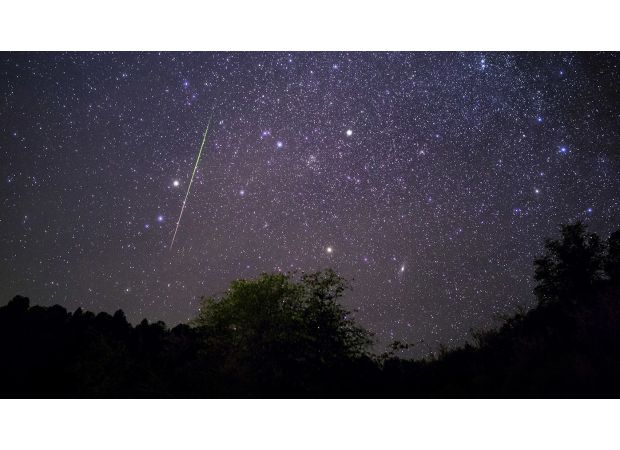Australian skies will soon be lit up by fiery streaks.
Learn how to view the upcoming Leonid meteor shower in the following week.

Next week, Australians will have the exciting opportunity to witness the annual Leonid meteor shower at its peak visibility. The night sky will be lit up by fiery meteors traveling at an impressive speed of 70 kilometers per hour, creating a spectacular show for those who are awake to watch.
According to Associate Professor Michael Brown from Monash University's School of Physics and Astronomy, the Leonids can be quite a dazzling sight, often appearing as bright shooting stars or even brighter. For those who are interested in catching a glimpse of this meteor shower, here's everything you need to know.
Firstly, the Leonid meteor shower can be seen in both the Northern and Southern Hemispheres, with an average of about 15 meteors per hour. However, Brown warns that it won't be a continuous shower of meteors, but rather a few every few minutes.
If you're wondering when and where to watch the Leonid meteor shower, mark your calendars for the night of November 17. The meteors will start appearing near the Leo constellation in the east after midnight and will continue to be visible until the early morning. To get the best view, Brown suggests finding a location away from bright city lights. The darker the sky, the better the view will be. However, even those in the suburbs should still be able to see some of the brighter meteors.
Unfortunately, light pollution and the full moon next week may make it more challenging to see the fainter meteors. But don't let that discourage you from trying to catch a glimpse of this spectacular event.
So, what exactly causes the Leonid meteor shower, and how rare is it? Well, it's named after the Leo constellation, but it's actually caused by the dust trail from the comet 55P/Tempel-Tuttle. This small comet takes 33 years to complete one orbit of the sun, leaving behind a trail of comet particles and asteroid dust. When Earth passes through this debris, it collides with the planet's atmosphere, creating a shower of fiery streaks of light in the night sky.
The Leonid meteor shower happens every year and reaches its peak visibility in mid-November. However, every few decades, it puts on an even more spectacular show. About once every 33 years, the Leonid meteor shower becomes a meteor storm, with at least 1,000 meteors falling into Earth's atmosphere per hour. In 1966, there was a storm that lasted for 15 minutes, with tens of thousands of meteors falling through the atmosphere. Another storm occurred in 2002, which Brown was lucky enough to witness while living in Arizona, USA. He recalls sitting in a hot tub with a beer and watching the meteors falling all around him, some of them bright enough to cast shadows.
The next Leonid meteor storm isn't expected until 2035, so make sure to mark your calendars for the night of November 17 and find a dark spot to watch this incredible event. And for all the latest updates on breaking news, celebrity gossip, and sports, make sure to join our WhatsApp channel. No comments, no algorithm, and your privacy is guaranteed. Happy meteor watching!
9 Views


